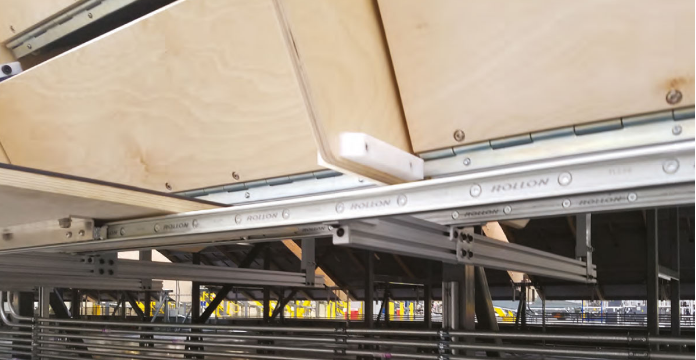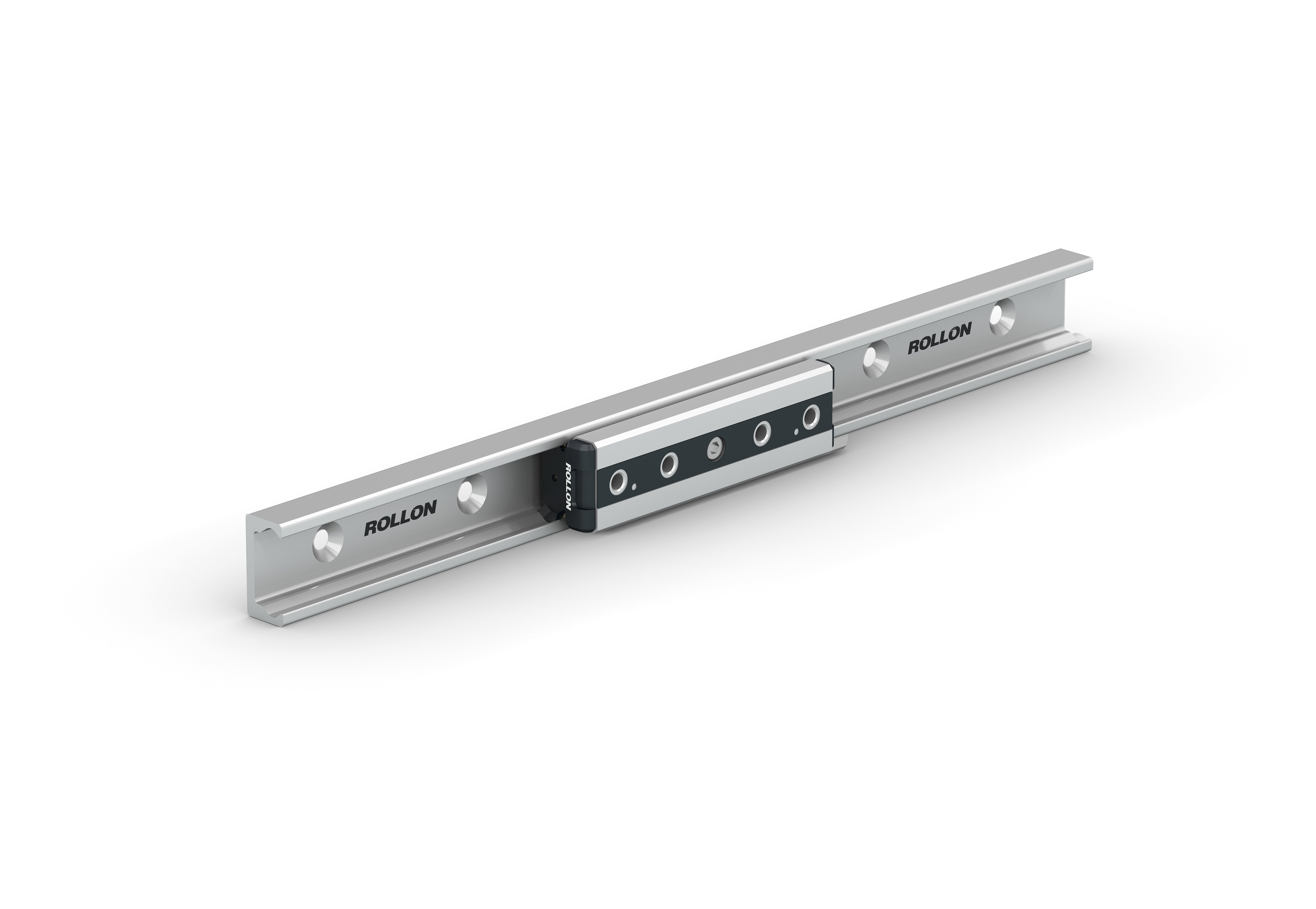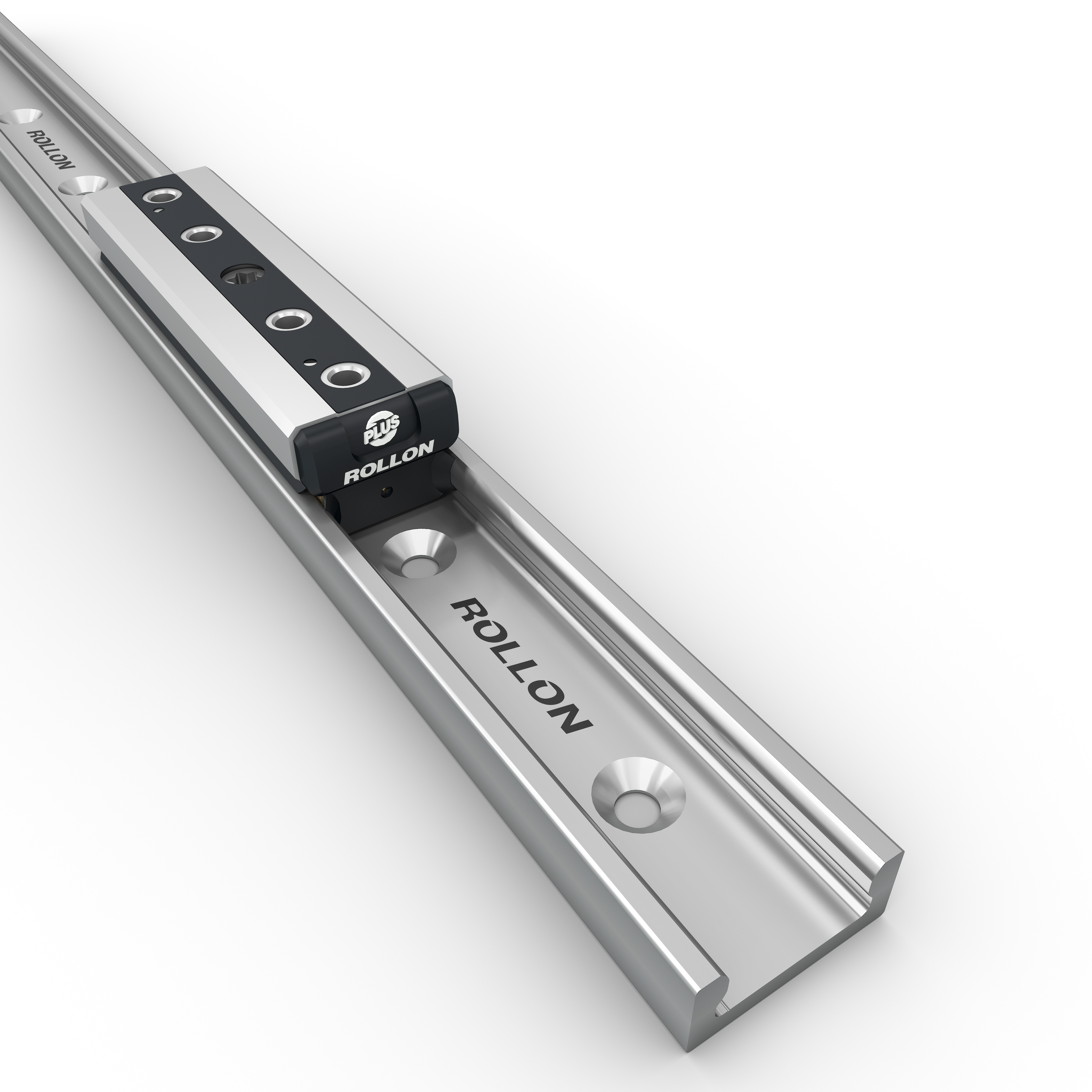When it comes to automated technology we often think about robots, self-driving vehicles or complex pick&place systems.
Equally important, however, are the smaller, “simpler” structures that must be designed to interface with precisely those more complex solutions. This is the case, for example, with automation in distribution and logistics centers: this is literally changing the way they work compared to how we have come to know them.
This is demonstrated by the experience of system integrator N-III Inc. which devised a simple solution to improve the efficiency of an existing warehouse's temporary packaging management module with the use of linear guides.

Engineering and application challenges
The application was requested by an automatic distribution center that felt the need to improve its packaging modules. Each module consists of four slides that feed packages from the top of the system to the operator. Normally, the operator is notified of an order and, from there, can pick it up, pack it and place it on a conveyor belt under the slides.
The client company, based on the operation of this facility, requested that support platforms be incorporated into the design in order to allow operators to easily box completed orders.
A number of solutions were initially proposed, including a scissor lift, a folding shelf and a motorized wheeled cart. However, all of these systems would operate separately from the existing module without mechanically interfacing with it. These ideas, in addition to not fully respecting the client's requirements, were also discarded because they were too expensive or had ergonomic problems that required workers to move in a disjointed manner, running the risk of injury.

N-III solved the problem by creating tables made of durable canvas, which they covered with an ABS plastic. These ABS "tops" were waterjet cut and served as a template for moving the tables off the canvas. The tables were then mounted on a Rollon linear guide, the Compact Rail, which in turn is simply mounted on a standard aluminum extrusion that is not particularly precise, but requires good load capacity and effective management of linear motion, i.e. without sacrificing any performance.
Through this arrangement, workers can slide a table along the length of the slides to where it is needed, such as a taping station. In addition, there is only one table per four modules; tables can travel freely up to a maximum of 12 modules, maximizing design flexibility and minimizing the number of tables themselves that must be installed.

Rollon's Rompact Rail for de-alignment management
The choice of Compact Rail is tied to one of its indisputable advantages, which is its ability to handle misalignment. Bearings that are not properly aligned during installation can cause problems on any precision machine, resulting in wear or even reduced bearing life. Compact Rail, on the other hand, is “naturally” designed to manage misalignment, thanks to a track geometry capable of absorbing alignment errors in one or two axes.
While the highest precision rails measure acceptable misalignment in microns, Compact Rail measures it in degrees and millimeters. For example, Compact Rail rollers can rotate up to 2 degrees from the rail without affecting functionality or increasing wear.
For machine builders, having a self-aligning system translates into greater design freedom and reduced costs. Simple spacing tools facilitate installation to the correct tolerance.

Do you want to know more about the advantages of using Compact Rail?


